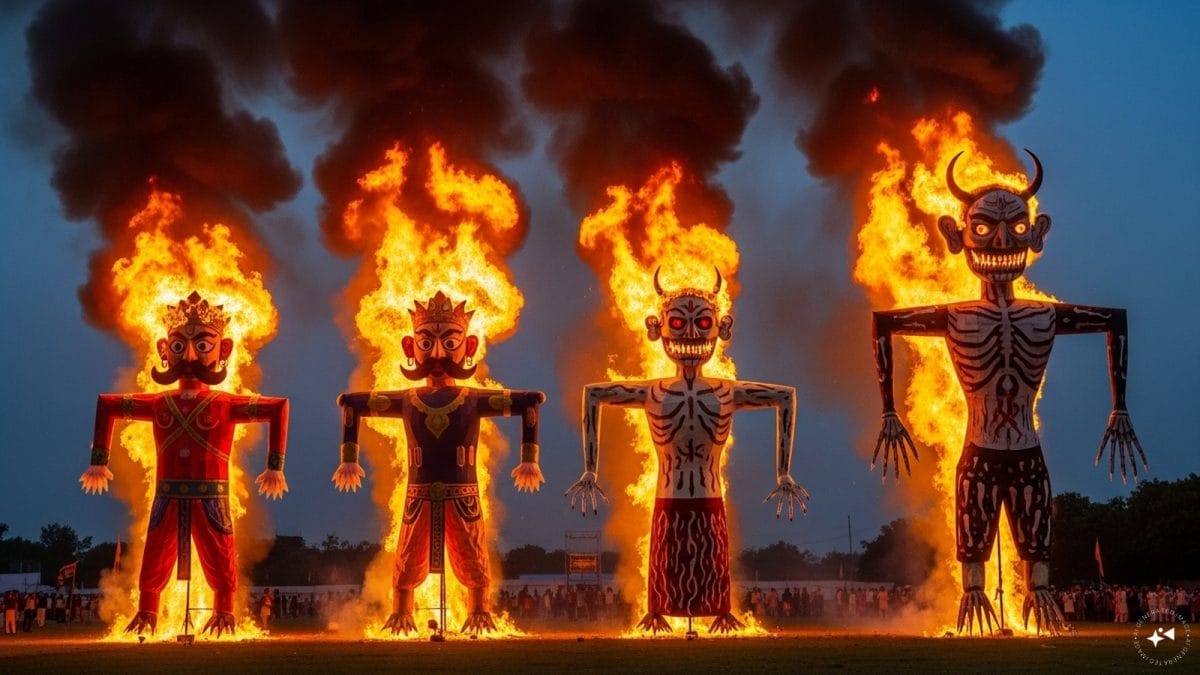Last Updated:
Police in Jalandhar district have introduced a powerful symbolic gesture: installation and burning of a fourth effigy—a representation of the ‘Demon of Drugs’ (Nasheyan Da Rakshas)

Installed at major Dussehra venues, including Ladowali Road, Adarsh Nagar, and Burlton Park ground, the effigy serves as a highly visible public awareness tool across the city’s more than 44 celebration sites. Representational image/AI-generated
Amid the traditional celebrations of Dussehra, which symbolises the triumph of good over evil, the police in Punjab’s Jalandhar district have introduced a powerful symbolic gesture: the installation and burning of a fourth effigy—a representation of the “Demon of Drugs” (Nasheyan Da Rakshas). This unprecedented move, alongside the customary effigies of Ravana, Meghnad, and Kumbhakarna, underscores the state’s fierce commitment to combating the pervasive drug menace.
Recommended Stories
Installed at major Dussehra venues, including Ladowali Road, Adarsh Nagar, and Burlton Park ground, the effigy serves as a highly visible public awareness tool across the city’s more than 44 celebration sites. The police commissionerate’s initiative aims to utilise the festival’s deep-seated cultural symbolism—the defeat of evil—to galvanise the public against drug addiction and trafficking. Senior police officials, including the Commissioner of Police, will be present at these locations to address the tens of thousands of attendees before the effigies are set ablaze, delivering a strong message about the “War Against Drugs” (Yudh Nashe De Virudh).
This symbolic act is set against the backdrop of an ongoing, intense crackdown on drug-related crime across Punjab. The police have been conducting continuous anti-drug campaigns, resulting in numerous arrests under the Narcotic Drugs and Psychotropic Substances (NDPS) Act and the demolition of properties allegedly constructed using the proceeds of the illegal drug trade.
The integration of the Demon of Drugs into the Dussehra ritual, officials say, transforms the traditional religious event into a mass public resolution, visually and emotionally committing the community to conquering what many consider the state’s most destructive contemporary evil. By burning this fourth demon, the authorities hope to ignite a collective spirit of righteousness and self-cleansing, reinforcing the idea that the internal vice of addiction and the external network of trafficking must both be vanquished for a “Nasha Mukt Punjab” (Drug-Free Punjab).
About the Author
The News Desk is a team of passionate editors and writers who break and analyse the most important events unfolding in India and abroad. From live updates to exclusive reports to in-depth explainers, the Desk d…Read More
The News Desk is a team of passionate editors and writers who break and analyse the most important events unfolding in India and abroad. From live updates to exclusive reports to in-depth explainers, the Desk d… Read More
October 02, 2025, 18:47 IST
Loading comments…
Read More



